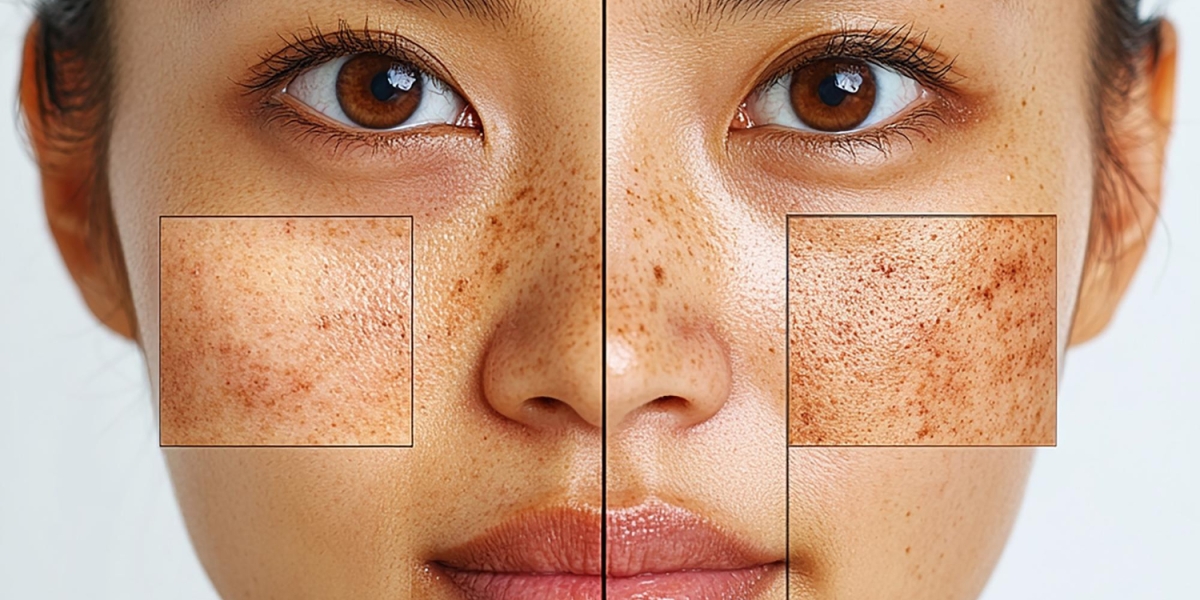Introduction
Pigment reduction is a term commonly used in dermatology and skincare to describe various methods and treatments aimed at reducing hyperpigmentation and uneven skin tone. Hyperpigmentation can manifest in different forms, including age spots, melasma, and post-inflammatory hyperpigmentation. This guide delves into the causes of pigmentation issues, the science behind pigment reduction, and the most effective treatments available.
Causes of Hyperpigmentation
Hyperpigmentation occurs when excess melanin, the pigment responsible for skin color, is produced and accumulates in certain areas of the skin. Several factors can contribute to this condition:
-
Sun Exposure: Ultraviolet (UV) rays from the sun stimulate melanin production. Prolonged exposure can lead to sunspots and freckles.
-
Hormonal Changes: Conditions like melasma, often triggered by pregnancy or contraceptive use, can cause dark patches on the skin.
-
Inflammation: Post-inflammatory hyperpigmentation arises after skin trauma or inflammation, such as acne or eczema.
-
Aging: Age spots or liver spots commonly appear as we age due to prolonged sun exposure and changes in skin structure.
Scientific Basis of Pigment Reduction
Pigment reduction focuses on minimizing melanin production and accelerating skin cell turnover. Here are key mechanisms involved:
-
Inhibition of Melanin Production: Treatments often target the enzyme tyrosinase, which plays a crucial role in melanin synthesis. By inhibiting this enzyme, melanin production can be reduced.
-
Exfoliation: Regular exfoliation helps remove dead skin cells and promotes the regeneration of new, evenly pigmented skin.
-
Lightening Agents: Ingredients like vitamin C, hydroquinone, and azelaic acid work to lighten existing pigmentation and improve overall skin tone.
-
Sun Protection: Sunscreen protects the skin from UV rays, preventing further pigmentation and allowing existing treatments to work more effectively.
Effective Pigment Reduction Treatments
-
Topical Treatments:
- Vitamin C: Known for its antioxidant properties, vitamin C helps brighten the skin and reduce pigmentation.
- Hydroquinone: A potent skin lightener that reduces melanin production. It is often used in combination with other agents.
- Retinoids: These derivatives of vitamin A accelerate skin cell turnover, which can help fade hyperpigmentation.
-
Chemical Peels: These involve the application of acids like glycolic acid or salicylic acid to exfoliate the skin and reduce pigmentation. Peels vary in strength and can be tailored to individual skin needs.
-
Laser Therapy: Laser treatments target melanin in the skin and break it down, leading to a reduction in pigmentation. Types of lasers used include fractional lasers and intense pulsed light (IPL).
-
Microdermabrasion: This technique uses fine crystals to exfoliate the outer layer of the skin, which can help improve the appearance of pigmentation over time.
-
Cryotherapy: This involves the application of liquid nitrogen to freeze and destroy pigmented lesions, which then fall off as the skin heals.
Preventing Hyperpigmentation
Prevention is key to managing hyperpigmentation. Effective strategies include:
- Sun Protection: Regular use of broad-spectrum sunscreen with SPF 30 or higher is essential.
- Avoiding Excessive Sun Exposure: Seek shade and wear protective clothing when outdoors.
- Consistent Skincare Routine: Incorporate products with active ingredients known to prevent and treat pigmentation.
Conclusion
Pigment reduction is a multifaceted approach that combines various treatments and preventive measures to address hyperpigmentation. Whether you’re dealing with sunspots, melasma, or post-inflammatory pigmentation, understanding the underlying causes and available treatments can help you achieve a more even and radiant complexion. Consulting with a dermatologist can provide personalized recommendations and ensure you choose the most effective treatment for your skin type and condition.
